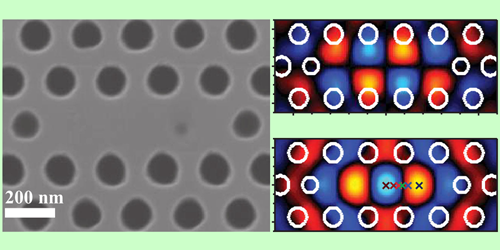Explaining Asymmetric Emission from Quantum Dots
Semiconductor quantum dots (QDs) are an important source of light for applications in quantum information and quantum metrology (see Synopsis: Toward a Perfect Single-Photon Source). These nanometer-sized structures can also shed light on problems that defy physicists’ understanding of quantum electrodynamics. Among such problems are conflicting theoretical predictions about the decay of QD excitons—quasiparticles comprising an electron bound to a hole inside a semiconductor—when the QD is confined in a photonic cavity. Now, Alexey Lyasota, currently of the University of New South Wales, Australia, and colleagues offer experimental support for one of those theories [1]. Their result shows that a theoretical description of light-matter interaction is not complete without accounting for the interference between excitons’ optical decay channels.
Light emitted by a QD in a microcavity differs from that emitted by a QD in a bulk semiconductor. A QD in a microcavity emits light with a polarization-dependent spectrum whose precise asymmetry is determined by the QD’s position within the cavity. A recent theory proposes that the asymmetry occurs because excitons—generated when the QD absorbs a photon—decay via free-space and cavity-confined optical modes, and these optical modes interfere with each other.
Lyasota and his team confirmed this theory by making polarization-resolved measurements of QD spectra, looking specifically at spectral features that correspond to exciton transition energies. Free-space and cavity-confined photon modes have different polarization properties, so the researchers were able to pick out the interference effect in the polarization-resolved exciton emission. They say that understanding this interference could lead to single-photon emitters with higher quantum efficiencies than current devices and enable an improved understanding of unwanted QD radiative losses.
–Sarah Wells
Sarah Wells is an independent science journalist based outside of Washington, DC.
References
- A. Lyasota et al., “Mode interference effect in optical emission of quantum dots in photonic crystal cavities,” Phys. Rev. X 12, 021042 (2022).




